Summary
It’s been six years since that summer adventure when Taichi Yagami and the rest of the DigiDestined crossed over to the Digital World. And nearly three years have passed since the final battle between Hikari Yagami’s group and BelialVamdemon. As the peaceful days passed by, at some point the gate to the Digital World closed. Not even the DigiDestined know what caused this, and time alone continues to pass.
Trailer
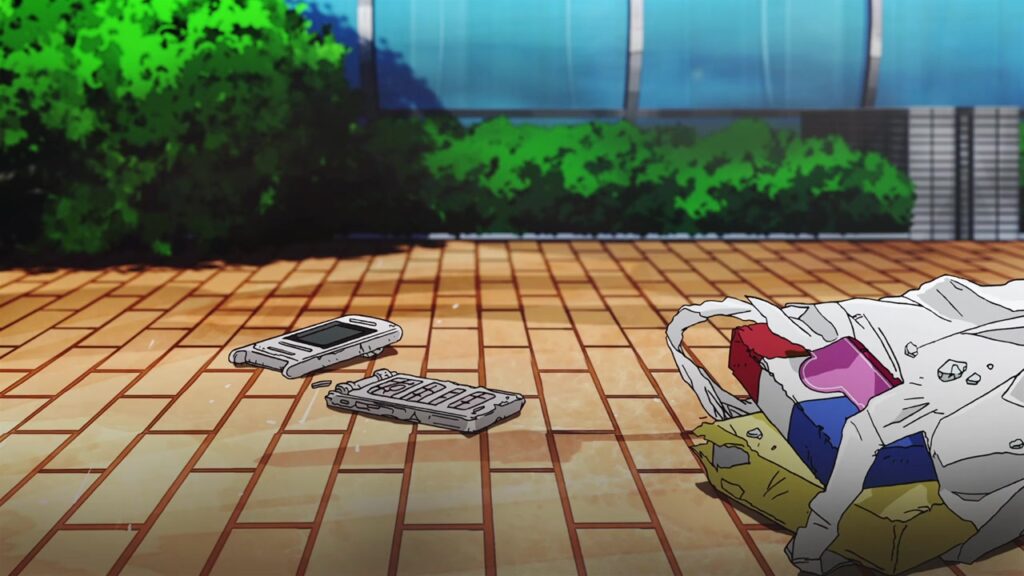
There is a commonly recurring image in this film. The phone, laying broken on the ground, clearly bares some significance. We know this, because the camera cuts back to it many times over the duration of the film (I stopped counting when I ran out of fingers).
There’s obviously the use of a phone as a portal to the digital world – a literal connection to infinite amounts of information, and especially with phones much more powerful now than when series first appeared on TV in the late 90’s.
There’s also the possibility that the phone represents a young person’s entire world. Whilst somewhat materialistic, this device is with them at all times. It’s their way of reaching out to friends and family, of mapping their way through unknown territory or even just ordering pizza.
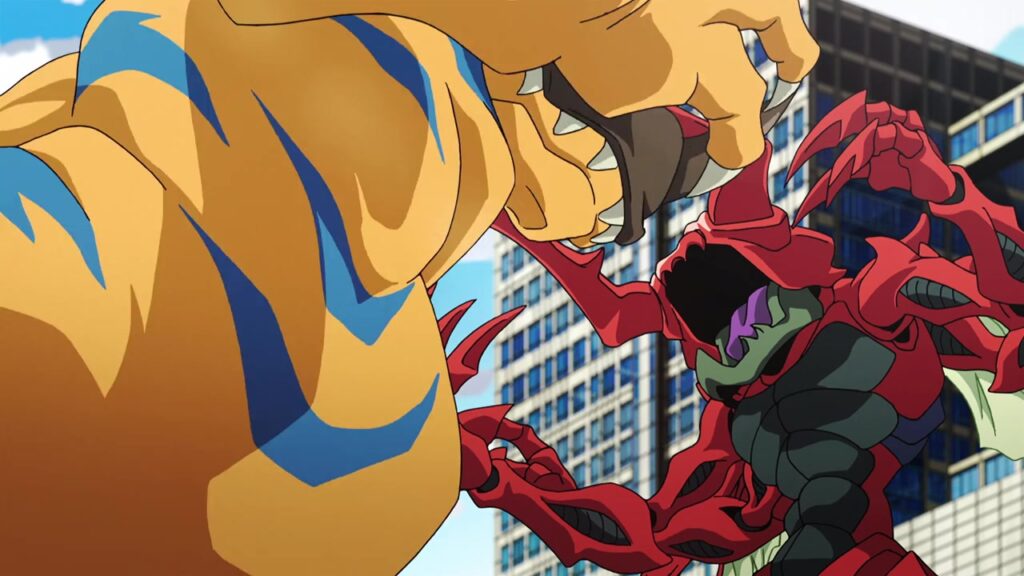
Lying there broken, it’s representative of the destruction on a larger scale. As giant monstrous beetles rip through Odaiba; presumably destroying a lot more than just cellphones as they rampage.
But what if it’s not some kind of metaphor, and in my opinion this is more likely: what is essentially b-roll footage is simply used to fill spaces by re-using existing animation. This simple image, which isn’t particularly dramatic or impacting is used time and time again, usually at a point where our protagonist is suffering some inner turmoil. It feels lazy, and it’s underwhelming in its mundanity. Worst of all, it is shown so often that it comes to be expected, and eventually I couldn’t help but laugh when it inevitably appeared.
For me, this was a sticking point.
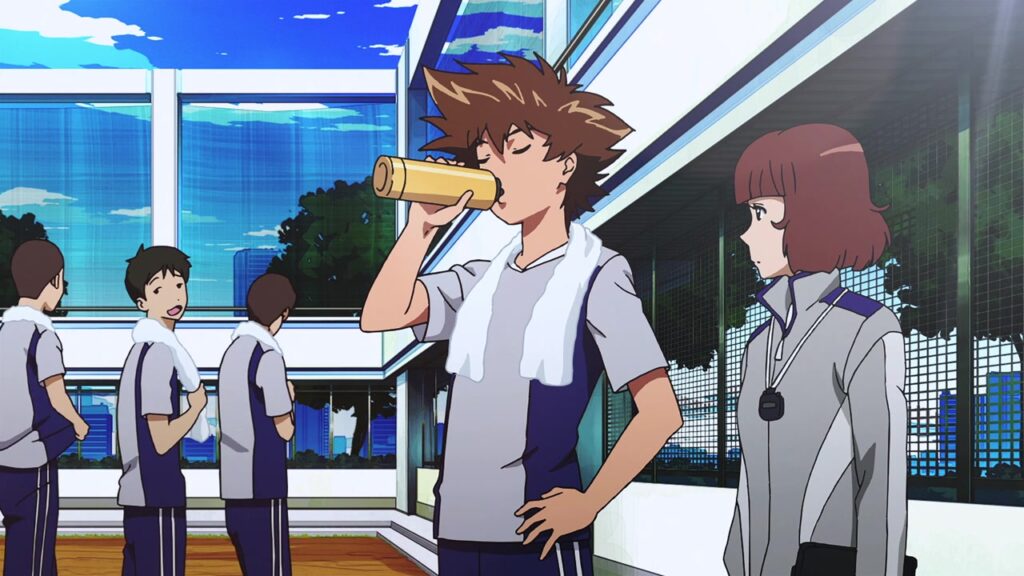
Digimon Adventure Tri celebrates the 15th anniversary of the Digimon franchise. The first film, “Reunion” is part of a six-part series, based a few years after the events of the first two seasons of the original anime.
Despite growing up with the original series, I can’t say I enjoyed this release. Even with help from the nostalgic element, the film underperformed in several key areas, and with the exception of the familiar monsters, didn’t particularly fit in with the franchise.
One of the biggest problems Digimon Adventure Tri seems to have is not knowing who its audience is. Some have marketed the film as being for adults who grew up watching Digimon. That may be true for some, but as an adult who grew up watching Digimon, I feel the film kinda misses the mark.
The intro sequence comes across as conceited, and trying to force in some unrelated philosophy. It’s never explained or referenced again during the film, but presumably has something to do with the new characters revealed to us later on. It’s easy to theorise based on the imagery and words in this intro sequence, but it doesn’t really fit well with the rest of the film, but it feels vague enough that it could be applied to just about anything relating to good vs evil.
There’s some dumbing down through over-explanation of simple concepts – things which fans would no doubt already understand, and newcomers could pick up quite easily. Whilst this in itself could be overlooked, it really affects the pacing.
And the pacing is important in this film. From the beginning, there are more establishing shots than in previously featured in the franchise. The script allows characters to breath and emote between dialogue; and this was one of the early indications that this film might be reaching out to a more mature, cinema-savvy audience, but unfortunately it gets to the point where the pacing feels sluggish and drawn out long before the climactic, but rushed finalé.
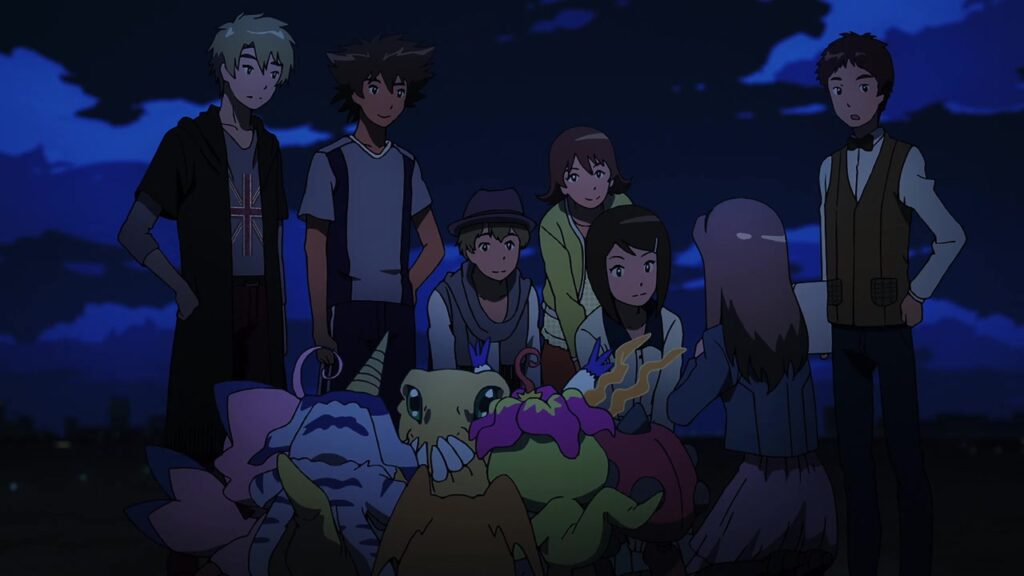
I grew up watching the televised version of Digimon in the UK. I didn’t learn about the Japanese intro theme, Butterfly, until much later – and out of context. For me, that song lacks any real significance, but I can tell it’s been lovingly remastered especially for this release. I’m sure it would have much greater impact, particularly later in the movie as a result of how the song is treated, but I kept expecting to hear the familiar lyrics “Hey Digimon, hey Digimon” or “Digimon, digital monsters, Digimon are the champions”, and never did. It might seem like a small grievance, but this is something the first feature length film, Digimon: The Movie totally nailed for the western release, and I couldn’t help but sing along (…when I was a kid).
I don’t want to hurt on the character designs, but for disclosure I’m a fan of Atsuya Uki’s previous work (he also put together the gorgeous posters for this series). They’re different, but they loan themselves to a more mature animation style. With the exception of the monsters themselves, the environments and characters are much closer aligned in their realism, and there are more restrictions on colours also.
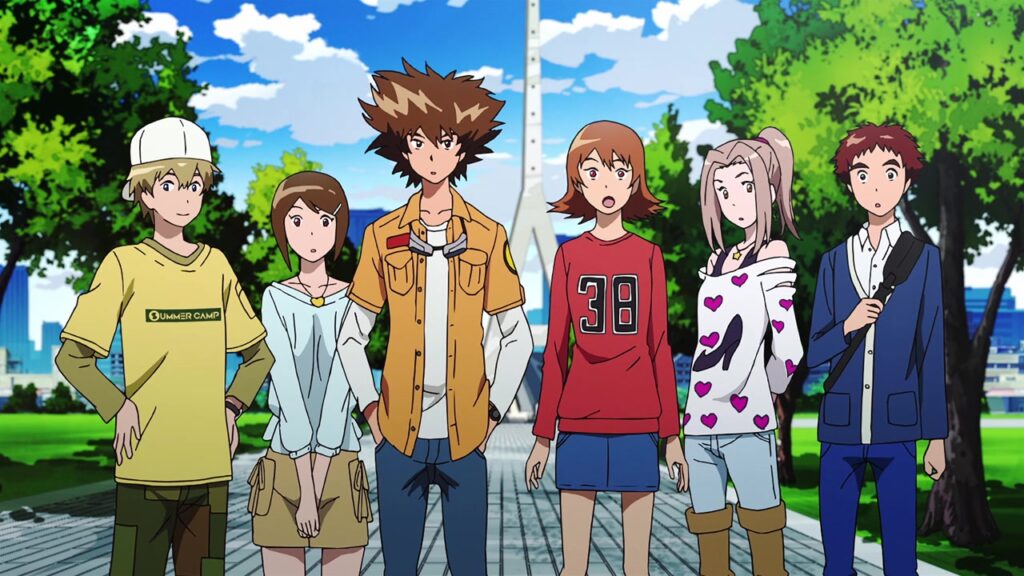
Whilst I wouldn’t recommend this film, unless you’re an absolute Digi-diehard, upcoming releases in this ongoing series may offer it some redemption in future. Certainly some context wouldn’t hurt. Even the most obsessive Digimon fans might have a hard time enjoying this film, as a result of the bold steps this film takes in distancing itself from previous work in the franchise. Bold though it may be, it isn’t a great film and certainly doesn’t live up to its predecessors.
What I would suggest, is revisiting the old classic, Digimon: The Movie! This feature length adventure really holds up, is still entertaining, and remains a great example of Japanese animation years after its release. If you enjoy that, why not try Summer Wars? Also directed by Mamoru Hosoda, both animations follow similar plot lines which are equally well executed. Something the modern films could stand to learn from.
First published at Otaku News
